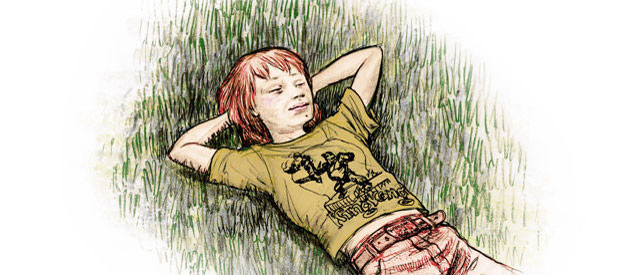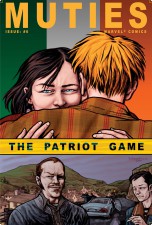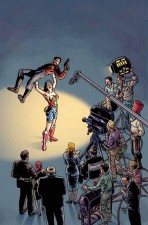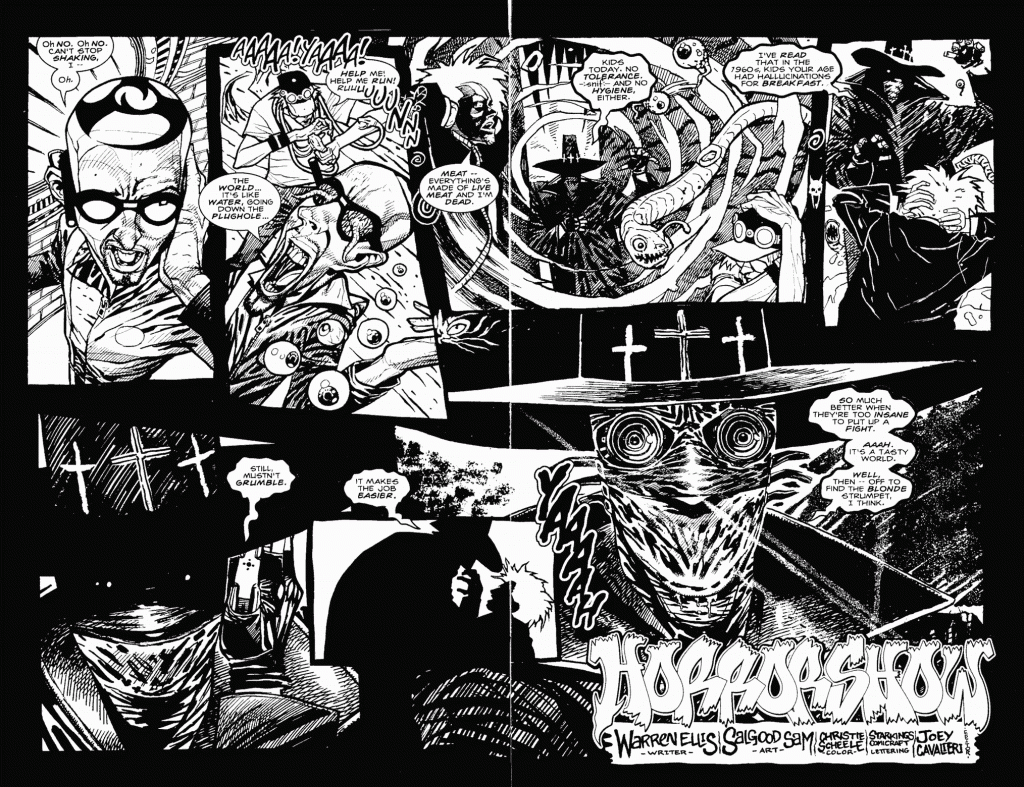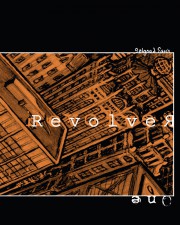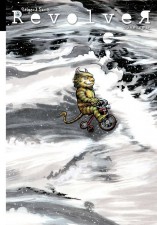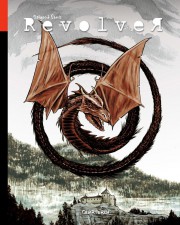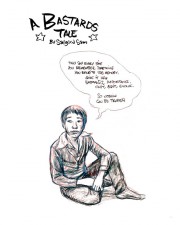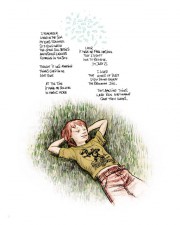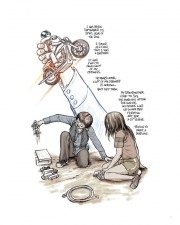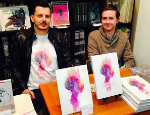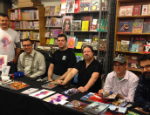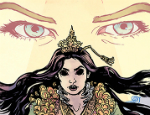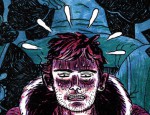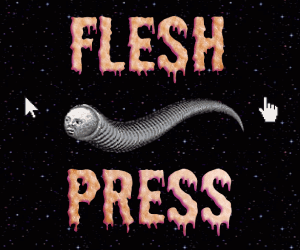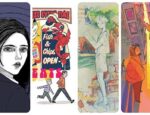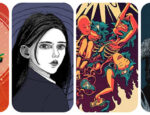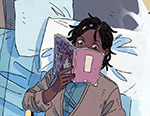Salgood Sam has made a name for himself writing and illustrating gripping, meaningful and contemplative stories – like his latest, Dream Life. He’s a unique force in the comics world, and is working on a contribution to the Broken Frontier anthology. With than it mind, we had a talk with him about Dream Life, anthologies and quality over deadlines.
Salgood Sam is contributing to the Broken Frontier Anthology, created to celebrate the magic of creator-owned comics. Check our Kickstarter campaign and please share it with your friends on social media using #BFanthology. You can find Salgood on Twitter @salgood.
Your latest book Dream Life: A Late Coming of Age, is beautifully drawn and combines the unsatisfied lives of five friends and their fantasies. Where did the inspiration for this piece of work come from?
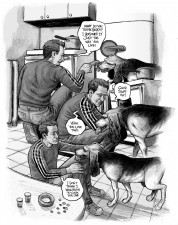 Thank you. Mostly from life really, one way or another.
Thank you. Mostly from life really, one way or another.
The project started years ago as a satire of Peanuts, and there are still some elements of that; in-jokes and easter eggs. But later I rewrote it several times as a more straight story about the characters, as they evolved in my head into people.
They borrow a lot from my own life and those of others I know – half-true stories and real-life events. It’s still got some humour in it, hopefully, and a fair bit of surrealism to keep it interesting – also all things I enjoy myself. It’s more fun when crazy stuff can happen and you don’t really have to explain it.
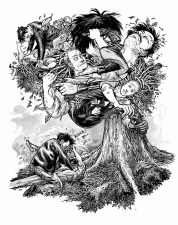 I guess a lot of the more personal work I’ve done since about 1995 has been in one way or another about finding meaning from things other than blind faith or ideology. Finding our places in the world. So that’s a big theme.
I guess a lot of the more personal work I’ve done since about 1995 has been in one way or another about finding meaning from things other than blind faith or ideology. Finding our places in the world. So that’s a big theme.
There were also a host of more formalist notions going into Dream Life. I spent A LOT of time trying to come up with page designs that were strongly intuitive regardless of a reader’s level of “comics literacy”, that also didn’t always rely on left-to-right grid conventions to do it.
That was a challenge for myself. And doing everything with either pantomime, symbolism, or fairly naturalistic dialogue. No thought balloons, caption boxes or third-person narration. That’s the stuff that made a lot of the day to day of getting it done inspiring for me. The only game I really play anymore: story-building.
How do you go about creating a graphic novel like Dream Life? Where do you start and what sort of ideas are you trying to capture when you write graphic novels?
Every book is a bit different, and each author too, of course. For Dream Life, it was something I built up to over a rather long time. It was a fun problem child.
But at one point I had a major breakthrough idea about it, and restructured it radically – I re-wrote about two-thirds and another 200 or so new pages in a fairly focused period of time. The script that was almost done then got shelved for a couple more years. I’d take it out to refine it and kept editing, but it was mostly there. It worked.
Eventually I gave it to a few trusted friends and peers to read and got generally good feedback, with some profoundly helpful notes. I got the courage up to submit it for a grant and amazingly I got it. And that kicked off the drawing part of the process.
That starts with layouts and breakdowns, turning the script into comics pages structurally. Then pencil roughs, cleanups, inks, and washes for Dream Life. I experimented with colour on it for a while, but it took too long and I decided it was a bit overwhelming to read, so I did the book in black and white.
Muties (Marvel) and Wonder Woman vs The Red Menace (DC)
When you first started out into the world of comics, where did you imagine yourself going? And how does that compare to where you are now?
I wasn’t sure, but working for DC and Marvel to pay the bills at least was high on my list of priorities then! I would have loved to have drawn Hellblazer once.
I did work on a number of books for them for a while, mostly Marvel, but it didn’t work out to be all it was cracked up to be. I could have kept at it for the payday, and it was a lot of money to me at the time, but I ended up walking away from it in the mid ‘90s. I burned my bridges even, when editors came back knocking. That was probably foolish, but I didn’t want to be tempted back into it.
In terms of the kind of work I’m doing today, I’m exactly where I imagined myself being then. It’s hard to make ends meet doing it, but I’ve been able to do more work of my own choosing than not in the last 15 years, so that’s good.
I just started a Patreon campaign a couple of months back, and I’m hopeful about how things are developing. And I’m very encouraged about things like this anthology.
Otherwise it’s still pretty tough to do work that is of my own design and get paid for it too. That’s one of the reasons I was really excited about the invitation to contribute to the Broken Frontier Anthology. Its always flattering to be asked, but a free hand to do something of my own, and it’s not all just “back end” and “exposure” to boot? Fantastic!
From an unpublished Ghost Rider 2099 story, by Warren Ellis and Salgood Sam
How would you say your artistic or graphic style has changed since you started creating comics?
For me, it changes in different ways, driven by the stories as much as my aesthetic choices. I’ve always taken a lot of pride in trying to channel what feels intuitively right for the work, rather than pursue a personal brand with the look of my drawings. That’s what the pen name is for!
You have a sort of ongoing anthology of your work in the form of your Revolver Quarterly. Why do you feel these anthologies are an important thing to do?
For one thing, I really like short stories as a format. A good collection of them is great for reading, well, on the can frankly! But also in transit or any time we don’t want to get into something more committed. I grew up on anthologies, so part of it is nostalgic familiarity, probably.
They are also a great way to deal with small bite-size storytelling problems for a novice, and to gain the reward of being “done” without it taking months or years. I pursued them first as a creator and still do for this quality.
But moreover, Revolver Quarterly is my personal answer to the problem of wanting to work on different length stories, many longer, but also the kind of space I can plop in a one-off short any time without too much need to justify it.
And, pragmatically, to have something coming out on a more frequent and regular schedule, even when what I’m working on is eventually book-length. I don’t want to ever do a monthly, but disappearing for a year or more to do a book as an independent creator is bad for business.
I think a lot of people forget the last wave of authors on the indie side of things, all had (or still have) a personal serialized book like this somewhere in their past. In the heyday of print it was how you built an audience doing atypical stuff.
Right now in Revolver Quarterly I’m working on a series of short stories to collect into a memoir (the one I’m doing for Broken Frontier is also part of that project) and a Dracula comic with Mark Sable. In a few issues I’ll be going back to wrap up the story I started in the first book of Dream Life, and I have about a dozen other story ideas I want to do eventually!
And I also publish old comix jams I’ve done with other artists, gag cartoons, illustrations as pin-ups, and sometimes even essays.
There’s a pretty broad mix of things there. A personal anthology lets me centralize all that to some extent, that’s why they’re important to me. It’s a very liberating format for an ongoing series. I hope many more people start reading it so I can keep it up and make it even more regular.
From ‘A Bastard’s Tale’, one of the stories in Revolver Quarterly
Without giving away any spoilers (!), what can we expect from your story for the Broken Frontier anthology?
Um… something that touches on consciousness-expanding experiences from my childhood?
So what else are you planning in the coming months, apart from your part in the Broken Frontier anthology?
The next issue of Revolver, ideally, volume four, will be done and published by May or so (one of my rules is it’s governed by being done WELL, not on deadline), and I’ve been teaching art for a year now. I’m planning on developing a few workshops I can offer online. Not sure when that will be available, but it’s something I’ve been giving a lot of thought.
And this summer I’m still hoping to have my completed book with Mark Sable, Dracula: Son of the Dragon, going out to the Kickstarter backers who helped get the work done.
I also hope to be in Vancouver for VanCAF, and growing the Spilt Ink Patreon drive generally is a top concern. I love how crowdfunding can scale for independent creators.
I don’t need to have it blow up like Amanda Palmer’s just did. It would only take a few hundred backers to make it a full-time concern for me that way and solve many of the problems that keep me from working faster.
So yeah, after you pledge for the Broken Frontier anthology, you should go look that up and follow me there too!
If you can’t wait to read Salgood Sam’s story, click here for a sneaky peek at his pencils.





